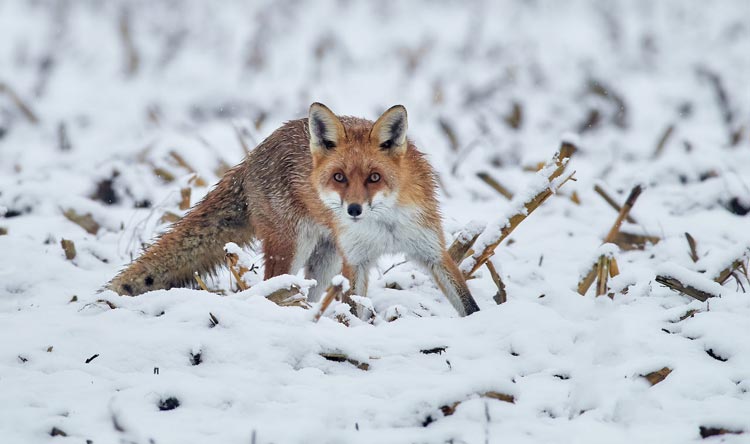Visit Gulmarg Biosphere Reserve
The Gulmarg Biosphere Reserve, also known as the Gulmarg Wildlife Sanctuary, is a protected area in the Baramulla region of Jammu and Kashmir, India, located 5 kilometres from the Gulmarg Bus Station. It is one of the most well-known wildlife areas in Jammu & Kashmir and one of the top tourist destinations in Gulmarg. It is located in the Pir Panjal Range of the Western Himalayas.
Aso Visit – Kashmir tour and travel packages
Conifers make up over 90% of this dominant forest. Cedrus Deodara, Pinus Griffithii, Abies Pindrow, Aesculus Indica, and other prominent plant species round out the major flora. Here, you can see shrubs like Indigofera Heterantha and Sorbaria Tomentosa as well as rich and di-cotyledonous herbs.
About Gulmarg Biosphere Reserve
Rare and endangered species of Hangul, Musk Deer, Serow, Leopard, Black Bear, and Red Fox, Brown Bear, among others, may be found in the Gulmarg Biosphere Reserve.
In the section on avi-fauna/birds, the region is home to a healthy population of pheasants and upland birds, including bearded vultures, golden eagles, and migratory species such the crimson tagopan, monal pheasant, blood pheasant, and koklass pheasant. Other fascinating birds include the Kashmir, Blue Rock Pigeon, Snow Cock, Koklas, Griffon Vulture, and Monal.
Gulmarg Wildlife Sanctuary
The Gulmarg Wildlife Sanctuary, which is situated at an altitude ranging from 2400 to 4,300 m, was first established as a wildlife reserve in 1981 and later converted to a sanctuary in 1987. The Jehlum Valley forest division to the north and west, Poonch and Pir Panjal to the south, and the Drang hamlet to the east are the boundaries of the sanctuary, which spans an area of 180 sq. km. Acidic lava flows are visible on the Panjal volcanic region that makes up the upper sections of Ferozpur Gorge’s extremely steep topography.
Also Visit – Kashmir honeymoon packages
Sub-alpine woods of silver fir, silver birch, and blue pine make up the bulk of the Gulmarg Wildlife Sanctuary’s vegetation. Snow leopards, musk deer, and other rare and exotic animals are among those that call the sanctuary home. Serow, Brown, Black, and Red fox are only a few examples of Serow. among the numerous species that can be found in the park. Pheasants and upland birds can be seen in good numbers in the sanctuary. Griffon Vulture, Snow Cock, Monal, Koklas, Blue Rock Pigeon, European Hoopoe, Kashmir Roller, Jungle Crow, etc. are examples of common birds.
Best Time to Visit Gulmarg Biosphere Reserve
The greatest months to see mammals are September through March while the best months to see birds are March through May. Due to the heavy snowfall and mountains on all sides, it transforms into a winter paradise.
The highlight for many visitors to Gulmarg is its magnificent biodiversity. If you enjoy seeing wildlife, take a stroll through the reserve to witness Ref Fox, rare animals including Musk Deer, Hangul, Brown Bear, and Leopard, as well as birds like Kashmir Roller, Blue Rock Pigeon, Griffon Vulture, and others. The luxuriant greenery that benefits the animals has its own allure. To get up close and personal with nature, stroll through the reserve.
Throughout the year, several types of flora and natural beauty are in bloom. However, the best times to witness the rarest animals and birds are from September to March and from March to May, respectively.
How to Reach
By air: Srinagar’s airport is the closest.
By rail: Jammu, which is 342 kilometres away, has the closest railhead.
By road: There are frequent, regular buses that depart from Srinagar (48 miles).
The biosphere reserve is close to a few tourist and private lodging facilities. However, since you are between 2400 and 4300 metres above sea level, sleeping at a campground might be a fun and exciting option.
For what is the Gulmarg Biosphere renowned?
The reserve is renowned for its breathtaking beauty, flora, and fauna. The location is 48 kilometres away from Srinagar. This is one of Gulmarg’s most stunning locations where you may see numerous endangered animals. A 180 square kilometre region makes up this reserve. The main draw of this reserve is musk deer.
When was Gulmarg Biosphere Reserve founded?
On the northeastern side of the Pir Panjal mountain ranges is this wildlife refuge. In 1981, this reserve was established as a game sanctuary; however, in 1987, it was upgraded to become a wildlife sanctuary. The height of the reserve ranges from 2400 to 4300 metres. One of the main attractions of Gulmarg is this reserve.
What is the cost of entry to the Gulmarg Biosphere Reserve?
For adults, the entrance cost to this reserve is 500 rupees. From 9:00 am until 4:00 pm, the reserve is open. You are welcome to come here during the day. The Pir Panjal mountain ranges and thick woods surround the reserve.
What time of year is ideal for visiting Gulmarg Biosphere Reserve?
Although you can come here any time of year, the summer is the ideal time to visit Gulmarg Biosphere Reserve. You can see numerous unique and exotic endangered animals throughout the summer, and you can also take in the foliage since the entire valley is in its prime during this period. The entire valley is coated in a heavy layer of snowfall during the winter.
For more information about Gulmarg Biosphere Reserve Contact C Himalaya one of the best travel agencies in Kashmir.


